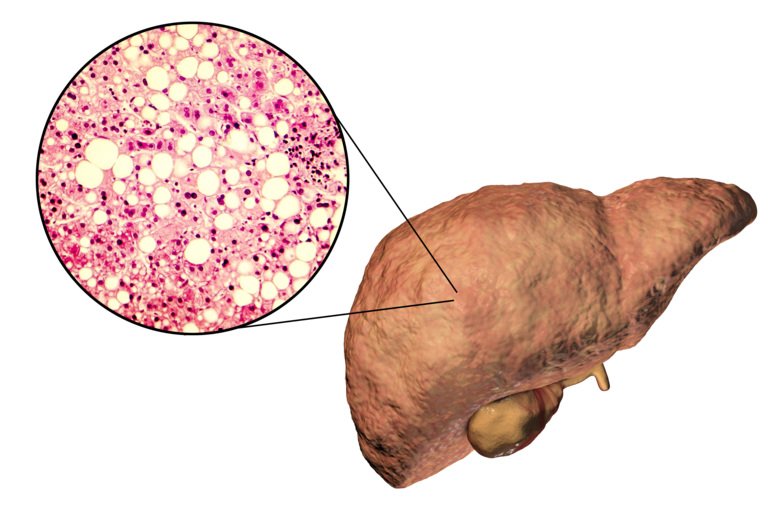New possible treatment strategy against fatty liver disease

Researchers at Karolinska Institutet in Sweden have identified a molecular pathway that when silenced could restore the normal function of immune cells in people with fatty liver disease. The findings could lead to new strategies for treating the condition, which is a major health risk for people with obesity. The study is published in the scientific journal Science Translational Medicine.
Non-alcoholic fatty liver disease (NAFLD) is an accumulation of excess fat in the liver of people who consume little or no alcohol. It is a common condition in obese individuals or people with diabetes. There is currently no medication available to treat the condition.
In this study, the researchers wanted to examine what happens on a cellular and molecular level in mouse and human livers overloaded with fat, and what may be done to help restore the damage. They found that liver macrophages, a type of white blood cells important for the immune system, respond to the unwanted fat by trying to burn it. In the process, these immune cells end up producing excessive amounts of oxidants that causes damage to the liver. Further investigation revealed that an antioxidant protein called NRF2, which usually protects the body from harmful oxidants, was completely shut down in the liver of the obese patients and mice.
More sensitive to oxidative stress
“This lack of NRF2 protein tells us that obese individuals do not have the ability to properly respond to oxidative stress induced by fat accumulation in the liver,” says Valerio Azzimato, researcher at the Department of Medicine in Huddinge, Karolinska Institutet, and first author in this study.
The researchers also found elevated levels of a small non-coding RNA molecule, or a microRNA, called miR144 in the livers of obese individuals and mice. Both the immune cells and the liver’s most abundant cells, the hepatocytes, produce more of this specific microRNA in response to oxidative stress. The miR144 molecule affects the NRF2 gene by decreasing its protein levels, which leads to a weaker antioxidant response, according to the researchers.
Antioxidant response restored after silencing of miR144
Using a technology that enables silencing of specific genes in liver macrophages, the researchers were able to suppress the expression of miR144 in the immune cells. This lowered the amounts of oxidants produced in the whole liver and restored the antioxidant response, suggesting crosstalk between the macrophage and hepatocyte liver cells.
“Given that using exogenous antioxidants has been associated with long-term side effects in several tissues, we believe that targeting miR144 to increase the endogenous antioxidant response represents a promising therapeutic strategy for the treatment of liver diseases in obese patients including non-alcoholic steatohepatitis which is becoming a major cause of liver cancer worldwide and currently has no pharmacological treatment,” says Myriam Aouadi, researcher at the Department of Medicine in Huddinge, Karolinska Institutet, and the study’s corresponding author.
Funding for this study was provided by AstraZeneca through the Integrated Cardio Metabolic Center, the Swedish Research Council, the Stockholm County Council, the Novo Nordisk Foundation, the Strategic Research Program in Diabetes at Karolinska Institutet, the Erling-Persson Family Foundation and the Diabetes Wellness Foundation Sweden.
Fat suffocates liver cells (research video)
Publication
“Liver macrophages inhibit the endogenous antioxidant response in obesity-associated insulin resistance,” Valerio Azzimato, Jennifer Jager, Ping Chen, Cecilia Morgantini, Laura Levi, Emelie Barreby, André Sulen, Carolina Oses, Joost Willerbrords, Connie Xu, Xidan Li, Joanne X. Shen, Naveed Akbar, Lars Haag, Ewa Ellis, Kerstin Wålhen, Erik Näslund, Anders Thorell, Robin P. Choudhury, Volker M. Lauschke, Mikael Rydén, Siobhan M. Craige, Myriam Aouadi, Science Translational Medicine, online Feb. 26, 2020, doi: 10.1126/scitranslmed.aaw9709
